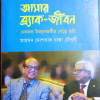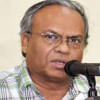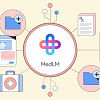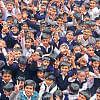People fork out most

Two out of every three Taka of health care costs in Bangladesh is borne by the people while the rest by the government, NGOs and others.
The out-of-pocket health expenditure paid by individuals in Bangladesh is one of the highest (67 percent of the country's total health costs) whereas it's 18 percent in the Maldives, 25 percent in Bhutan, 47 percent in Nepal, 56 percent in Pakistan, and 62 percent in India.
In the UK and the US, it is just 9 percent and 11 percent respectively.
A new government report on Bangladesh National Health Accounts (BNHA) also shows that per capita health expenditure of Bangladesh increased from $16 in 2007 to $37 in 2015.
The Health Economics Unit (HEU) of the health ministry prepared the report which is set to be released today.
Giving an estimation of 2015, the report said against a Tk 10, 200 crore public health finance, people had to bear Tk 30, 200 crore as health care costs.
Although government funding in healthcare increased, its share in total healthcare expenditure kept on declining over the years. In 1997, the government share was 37 percent, which came down to 23 percent in 2015, shows the report.
Seventy percent of the health expenditure is spent on drugs, health care services, curative health care while just 10 percent accounts to preventive care. Only two percent of the government's health spending goes to education and training of medical personnel.
HEU Director General Ashadul Islam identified a number of reasons for the rise in the out-of-pocket health expenditures. Changes in disease pattern, expensive and long treatments, medicines getting costlier are among them.
He also referred to easy use of technology, for example unnecessary pathological tests for normal fever, for the cost escalation.
In 2015, pharmacy was the largest provider of healthcare services accounting for Tk 196 billion. Pharmacy as a provider had been the largest entity since 1997.
Hospital was the second largest provider of healthcare services, accounting for Tk 115 billion in 2015.
According to the report, in 1997 government expenditure in public hospitals was Tk 7.6 billion, accounting for 70 percent of total hospital expenditure.
However in 2015, the amount came down to Tk 42 billion, which was 37 percent of the total expenditure.
“Although hospitals at the upazila level and below are enjoying the highest share of public funding, the overall share of hospital spending at the upazila level is declining,” the report said.
“In 1997, hospital facilities at upazila level and below was 43 percent of the total hospital expenditure which came down to 22 percent in 2007. Currently, it accounts for only 14 percent of total hospital expenditure.”
PREVENTION IS BETTER THAN CURE!
It is an old saying that prevention is better than cure. But this is just the opposite for the health care expenditure. According to the report, one-fourth of the country's healthcare expenditures are meant for curative purposes while some 11 percent spent on prevention.
According to the BNHA report, expenditure on medicines and curative purposes accounts for 71.9 percent of the total healthcare expenditure.
The report said, “Disaggregation of expenditures by function shows that retail drugs and medical goods and services of curative care account for major share of THE [total health expenditure].”
In 2015, total spending by the government on curative care was Tk 30 billion while it was Tk 84 billion by the private sector.
Ashadul Islam said there was a “serious cultural and behavioral deficit over the concept of health issue.
“We consider the health issue only when we feel bad or become ill. The prevention issue is seriously ignored in human behavior. So focus should be on this point seriously,” he said.
DHAKA GETS THE LION SHARE
According to the report, 46 percent of the total health expenditure of the country is spent for Dhaka.
It was 16 percent for Chittagong, 11 percent for Rajshahi and 12 percent for Khulna.
In 2015, health expenditure in Dhaka division was Tk 207 billion while it was Tk 45 billion for Chittagong. Dhaka's share was 39 percent of the total expenditure in 2007 while it was 31 percent in 1997.

 For all latest news, follow The Daily Star's Google News channel.
For all latest news, follow The Daily Star's Google News channel. 








Comments